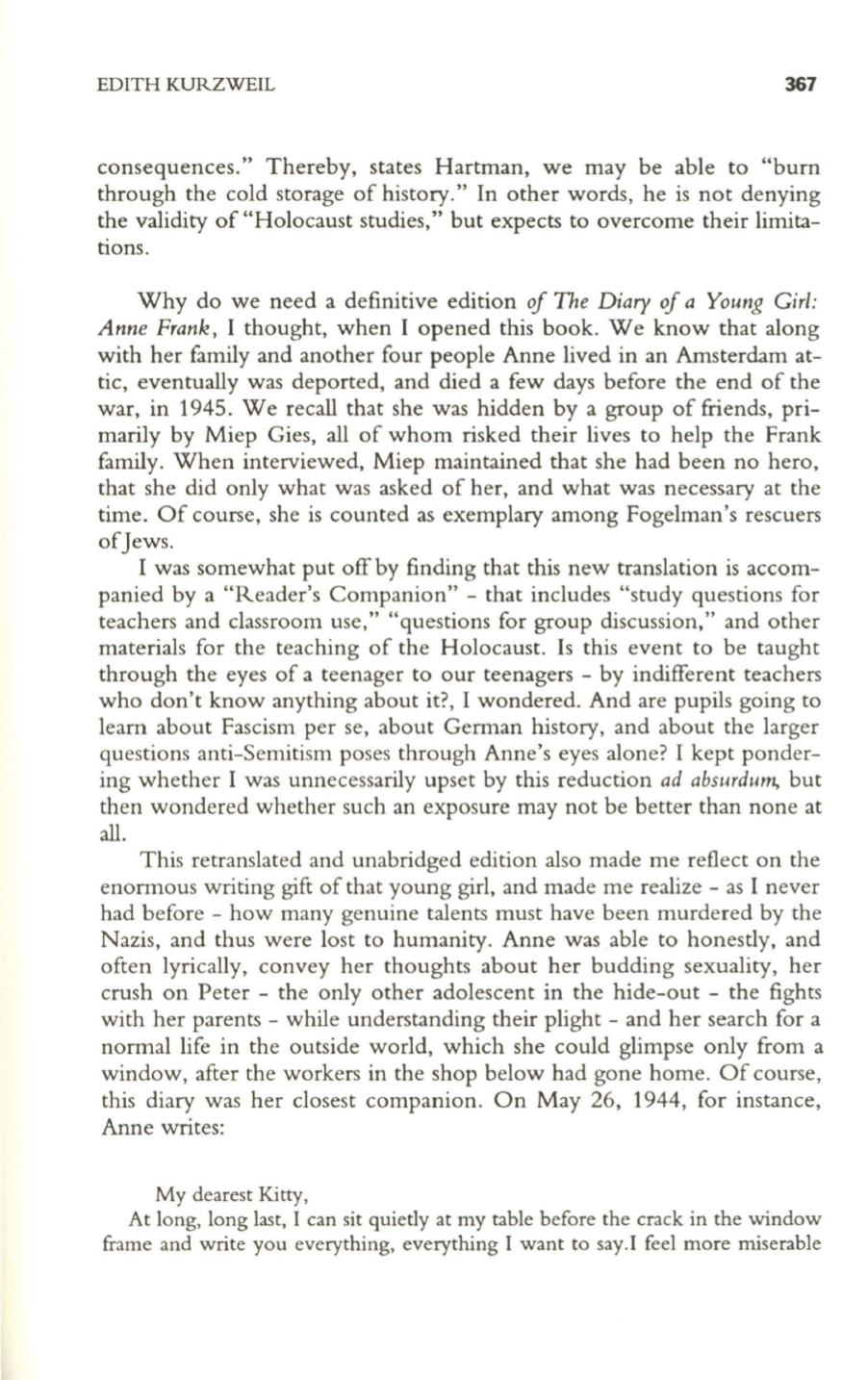
EDITH KURZWEIL
367
consequences." Thereby, states Hartman, we may be able to "burn
through the cold storage of history."
In
other words, he is not denying
the validity of "Holocaust studies," but expects to overcome their limita–
tions.
Why do we need a definitive edition
of The Diary of a Young Girl:
Anne Frank,
I thought, when I opened this book. We know that along
with her family and another four people Anne lived in an Amsterdam at–
tic, eventually was deported, and died a few days before the end of the
war, in 1945. We recall that she was hidden by a group of friends, pri–
marily by Miep Gies,
all
of whom risked their lives to help the Frank
family. When interviewed, Miep maintained that she had been no hero ,
that she did only what was asked of her, and what was necessary at the
time. Of course, she is counted as exemplary among Fogelman's rescuers
ofJews.
I was somewhat put off by finding that this new translation is accom–
panied by a "Reader's Companion" - that includes "study questions for
teachers and classroom use," "questions for group discussion," and other
materials for the teaching of the Holocaust. Is this event to be taught
through the eyes of a teenager to our teenagers - by indifferent teachers
who don't know anything about it?, I wondered. And are pupils going to
learn about Fascism per se, about German history, and about the larger
questions anti-Semitism poses through Anne's eyes alone? I kept ponder–
ing whether I was unnecessarily upset by this reduction
ad absurdum,
but
then wondered whether such an exposure may not be better than none at
all.
This retranslated and unabridged edition also made me reflect on the
enormous writing gift of that young girl, and made me realize - as I never
had before - how many genuine talents must have been murdered by the
Nazis, and thus were lost to humanity. Anne was able to honestly, and
often lyrically, convey her thoughts about her budding sexuality, her
crush on Peter - the only other adolescent in the hide-out - the fights
with her parents - while understanding their plight - and her search for a
normal life in the outside world, which she could glimpse only from a
window, after the workers in the shop below had gone home. Of course,
this diary was her closest companion. On May 26, 1944, for instance,
Anne writes:
My dearest Kitty,
At long, long last, I can sit quietly at my table before the crack in the window
frame and write you everything, everything I want to say.! feel more miserable


